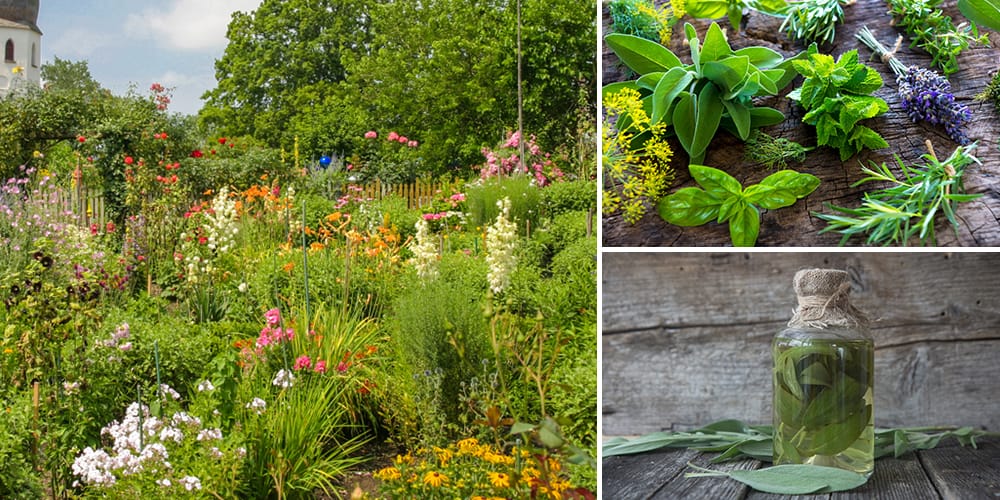
10 Medicinal Plants Nuns Used to Grow
Medieval monasteries and convents functioned as proto-hospitals for villagers. Many were dependent on the plants the nuns grew to cure ailments. From tummy aches to chest congestion, the nuns could find a plant to offer relief. Nuns are known for keeping gardens that are both beautiful and medically beneficial to the community. Thus, during medieval times, you would seek a convent if suffering of various ailments.
Living during medieval times was difficult, especially for the poor, who had few medical options. Thankfully, the nuns were growing plants for their own use and to serve the community.
10 Common Medicinal Plants Nuns Used to Grow
Rosemary
Do you suffer from memory loss, difficulty concentrating, or focusing? Rosemary is a fragrant herb used for centuries for curing these ailments. Besides cognitive benefits, rosemary is an anti-inflammatory and reduces the symptoms of inflammatory bowel disease and arthritis. For the best results when growing rosemary, you should plant in an area that has lots of sunshine and warmth.
Grow this herb using cuttings or store-bought plants. Place in large containers or directly in the ground. Ensure the soil is well-drained. Rosemary and thyme pair well together as a way of boosting the immune system. It contains antioxidants that fight free radicals responsible for causing chronic conditions like heart disease and cancer.
Sage
Sage has been used by ancient nuns of Rome and Greece for medicinal purposes. The nuns grew sage in the convent gardens as a powerful pain reliever. In addition, sage guards the body against damage caused by free radicals and oxidative stress. You can use sage to treat high cholesterol, diabetes, memory loss and even a sore throat or mouth.
To grow sage, it takes approximately 6 – 8 weeks for the seeds to germinate. Seeds should be planted in a moist starter soil mix and placed ⅛ inch into the soil. Soil should remain moist, not wet. Once germinated, sage should be grown in light that is bright and indirect.
Thyme
The chemicals in thyme aid in treating various infections. Thyme works well as a treatment for the following ailments: fungal and bacterial infections., sore throat, headache, bronchitis, laryngitis, asthma, pneumonia, or diarrhea. In addition, the nuns would treat children with whooping cough using the thyme they grew in their garden.
Thyme thrives in areas that are warm and sunny. It will grow best in full sunlight and soil that is well-drained. Soil should have a pH of 6.0- 8.0, and the plants require a minimum of six hours of sunlight daily. Water your thyme plants a couple of times each week to ensure damp soil. Thyme prefers moderate temperatures, in the 60-70 Fahrenheit range. Thyme and oregano pair well together, since both herbs aid in fighting viral and fungal infections. In addition, both these herbs work well for their anti-inflammatory properties.
Parsley
The entire plant- root, seed, and leaves- is used to make medicine. It is useful for kidney stones, bladder infections, constipation, skin issues, and gastrointestinal problems. If you are looking for a natural diuretic or antioxidant, look no further than the garnish on your dinner plate!
Growing parsley requires an area with partial sunlight and well-drained soil. Place the seeds in drills that are ½ inch. Gently cover seeds with soil and water. Rows should be 6 inches apart. It may take as long as six weeks for germination to happen.
Oregano
It is not only useful in food but also has excellent medicinal properties. Oregano is used to treat many conditions of the respiratory tract, such as coughs, bronchitis, asthma, stomach aches, indigestion, diarrhea. The nuns would often give some oregano to a young woman suffering from menstrual cramps. Next time you find yourself with a nagging cough that won’t go away, reach for the herb rack and the oregano.
Oregano grows best in a sunny area with shelter and compost or soil that is free-draining. The leaves must be harvested quickly, you will encourage new growth by cutting back the leaves often. If oregano is grown in pots, every two years replant into fresh soil.
Garlic
Ancient nuns treated the villagers with garlic to destroy and slow the growth of fungi, parasites, and bacteria. In addition, you can lower your cholesterol and blood pressure levels by incorporating garlic into your diet. Garlic boosts your immune system, preventing you from getting sick and preserving your overall health. Furthermore, garlic does the following: protects your liver, averts blood clots, and has anticancer properties.
When planting garlic, the cloves must be placed with the pointed side upwards. Place the cloves in soil depth of 1-2 inches, spacing approximately 2 inches. The pots of garlic should be in a window that faces south or westward to achieve the best natural lighting. Soil should be moist, not saturated. Once garlic shoots begin appearing, harvest them at 3-7 inches high.
Lavender
Lavender is useful in treating nervous system ailments, exhaustion, and skin disorders–from fungal infections to acne and eczema. In addition, people with muscle and joint pain have been prescribed to take lavender oil baths for relief. When ingested, lavender relieves headaches, sore throats, indigestion. The nuns also used lavender to clean and care for external skin wounds.
Lavender grows best in soil that is well-drained. It will likely thrive better in the shade of the afternoon. The soil should be low-to-average fertile, thus no need to amend the soil before planting with organic material. When soil contains some alkaline, lavender plants will grow best.
California Poppy
It is an herb containing chemicals that create a sleepy, relaxing sensation. The golden poppy has been used to treat aches and pains, insomnia, and anxiety.
Ensure to grow these poppies in an area of your yard or garden with lots of sunlight. Plant them in soil that is well-drained and sandy. Golden Poppies do not need enriched or fertilized soil to thrive. They only require sporadic watering. In excessive heat, these flowers go dormant, however, once temperatures cool, they will rebloom.
If you’re interested in growing medicinal plants at home and learning how to make easy remedies for various ailments, I recommend this Medicinal Garden Kit which has good quality, non-GMO seeds, plus a Herbal Medicinal Guide with instructions on how to properly grow and turn your herbs into remedies.
Fenugreek
Traditionally, fenugreek has been used both as medicine and food. Fenugreek aids in slowing sugar absorption, stimulates the production of insulin, and lowers blood sugar levels. Men and women can find this herb helpful in advancing hormone levels.
The seeds of fenugreek must be sown right in the garden because it does not do well when transplanted. Plant when all threats of frost have passed, in warm soil. Seeds should be planted ¼ of an inch into the soil, watering them well. Within the first week, the seedlings should appear.
Rose
You can use the juice of its petals for an antiseptic rinse to heal sores of the gums and mouth. The entire flowers may be converted into wine, or used as a remedy for diarrhea and stomachache. According to ancient gynecological writings, the Mediterranean used roses as medicine more than anyplace else. Rose decoctions have been utilized as sitz baths to reduce uterine ulcers and hemorrhages, and inflammation. An effective remedy for treating thrush is made out of the dried leaves and petals of a rose.
When planting roses, ensure the area has 6 hours of sunlight available. Also, the soil must be rich in nutrients and drain well. Watering roses should be done in the area of the roots and not on the surface of the leaves.
DIY Infused Garlic, Honey, & Oregano Remedy
You will need:
- 2 tbsp. dried oregano leaves
- Peeled garlic cloves (enough to fill the jar)
- Honey (enough to cover the garlic cloves)
- One large jar with a lid
- Chopsticks or other de-bubbling tool
- Paper towel or small cloth
- White vinegar
Steps:
- Put a tablespoon of oregano in the jar.

- Put the garlic into the jar to where it is slightly four inches from the top rim.

- Now scatter the rest of the oregano leaves on top of the garlic.
- Pour the honey into the jar. Ensure to fill it to where it’s covering the garlic and herbs by one inch. Use the de-bubbling tool or chopsticks to get rid of any remaining air bubbles inside the jar.

- Take a paper towel or clean cloth, and soak it in some white vinegar. Now wipe the jar’s rim to ensure it is clean and will provide a good seal.

- Place the lid onto the jar, ensuring it has a tight fit. Write on the jar top or put a label.

- Leave in a dark place to ferment and check regularly.
- Turn the jar over occasionally to allow the ingredients to blend together.

- Bubbles will start to appear after 2 days or so. It indicates that the fermentation process has begun. Open the jar to release carbon dioxide every day. If you don’t see any bubbles, it means that there is not enough moisture. So add a spoon of water. After the bubbles subside in a few weeks, there’s no need for you to open it daily anymore. Fermentation will be done after a month or so. But you can still keep it going so that it ages more. The fermentation will make the honey runny and darken the garlic. But this isn’t a cause for concern as it is bound to happen.
Storage: Store the homemade fermented honey in a cool, dry place. A pantry is a good pick. But if it gets too hot in the summer, you can move it to the fridge.
Dosage and Shelf-Life: You can mince a garlic clove and use it in food or eat it straight from the jar. You may also make a tea by simply mixing the honey and oregano ferment in hot water, with or without the cloves.
Fermented products usually have a long shelf-life. When fermented properly and placed in the right container, fermented honey garlic can last for more than a year.

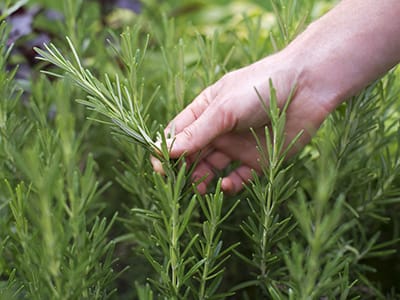
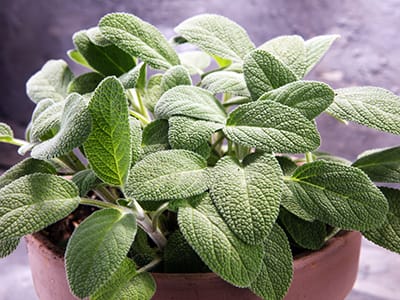
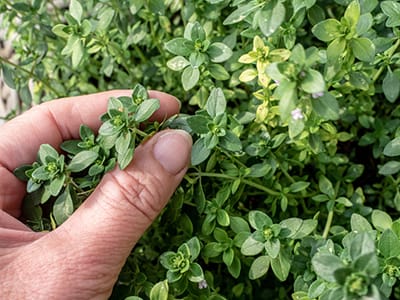
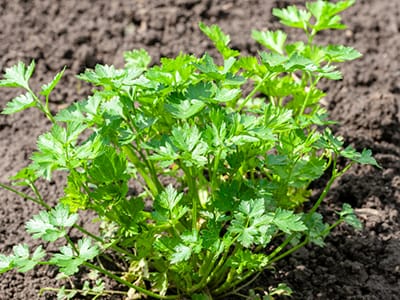
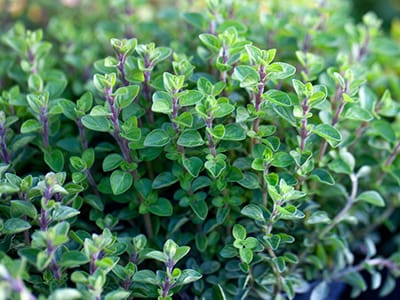
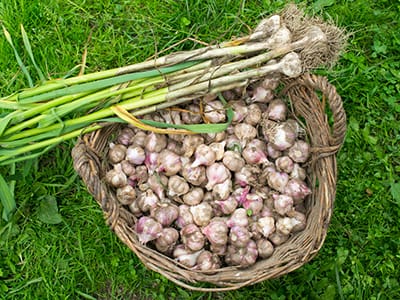
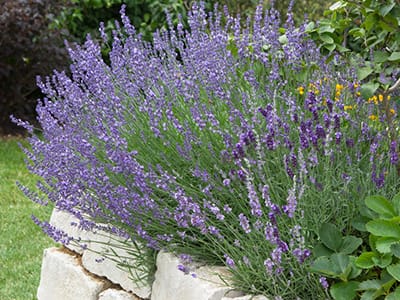
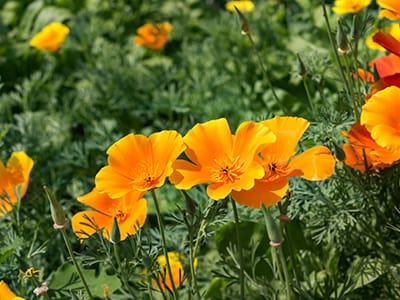
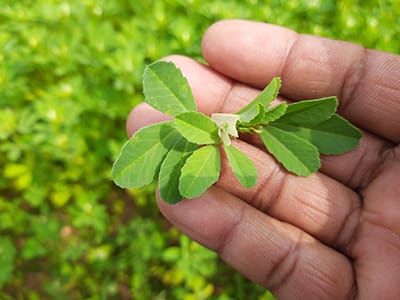
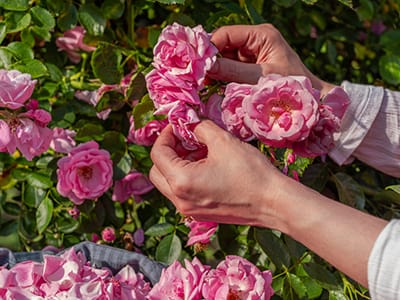
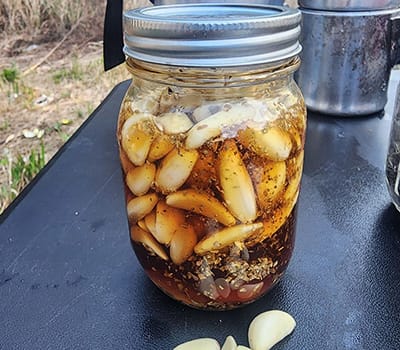
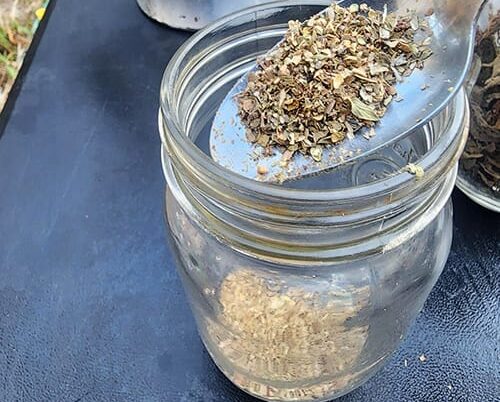
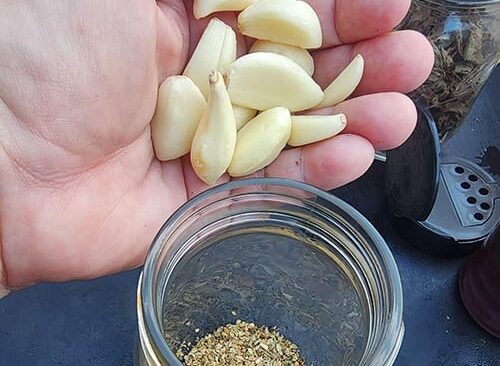
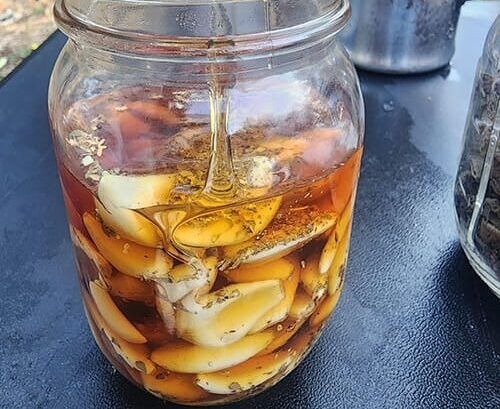
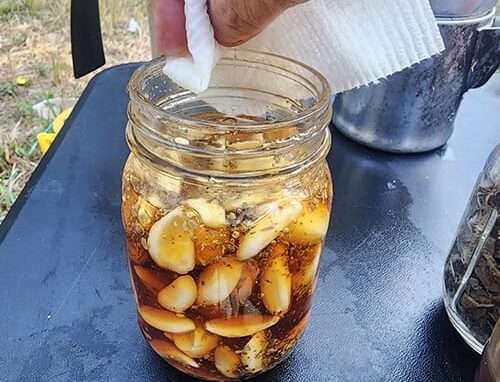
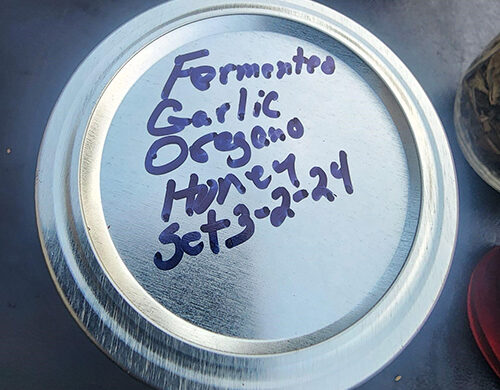
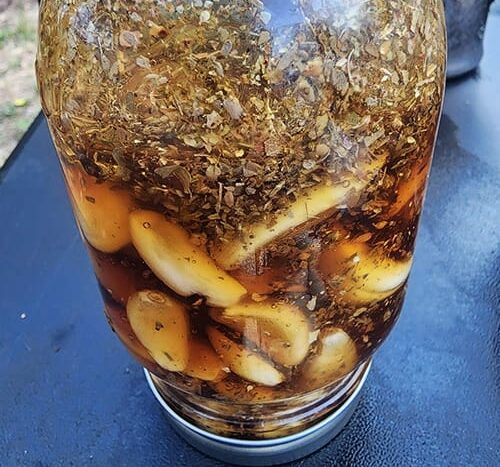
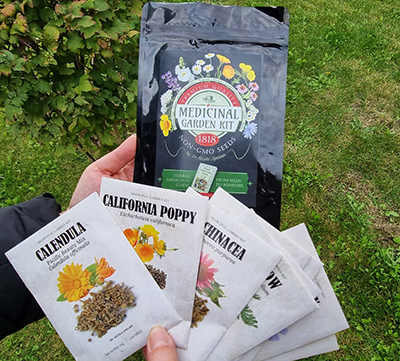
do you put any vinegar in the DIY Infused Garlic, Honey, & Oregano Remedy recipe
It’s the last item in the recipe, so, Yes!
No, it’s to wet the cloth and wipe the jar with.
Hi Jacqui,
Thank you for your comment!
The white vinegar is used for soaking a cloth and cleaning the jar’s rim. It is not added to the remedy.
Many blessings and good health!
Teresa, could you share some of your sources for this information about medicinal plants grown in monasteries? I would like to learn more…. Thank you.
Thank you for that. I’ve Covid and first one before low-down I’ve spend in hospital for 14 days on ventilator and coma. This one is better but with asthma and breathing difficulties I will try to do garlic, honey and oregano.
I’ve done rosemary which is excellent, and helps tremendously.
Thank you.
You state that thyme “thrives in areas that are hot and sunny”, but later that it likes cool — 60-70*F. I’m confused.
Hi Shirley,
Thank you for your comment!
Thyme prefers moderate temperatures between 60°F to 75°F (15°C to 24°C). It thrives in warm, sunny conditions but can tolerate some fluctuations in temperature.
Many blessings and good health!
Love these tutorials so much 💗